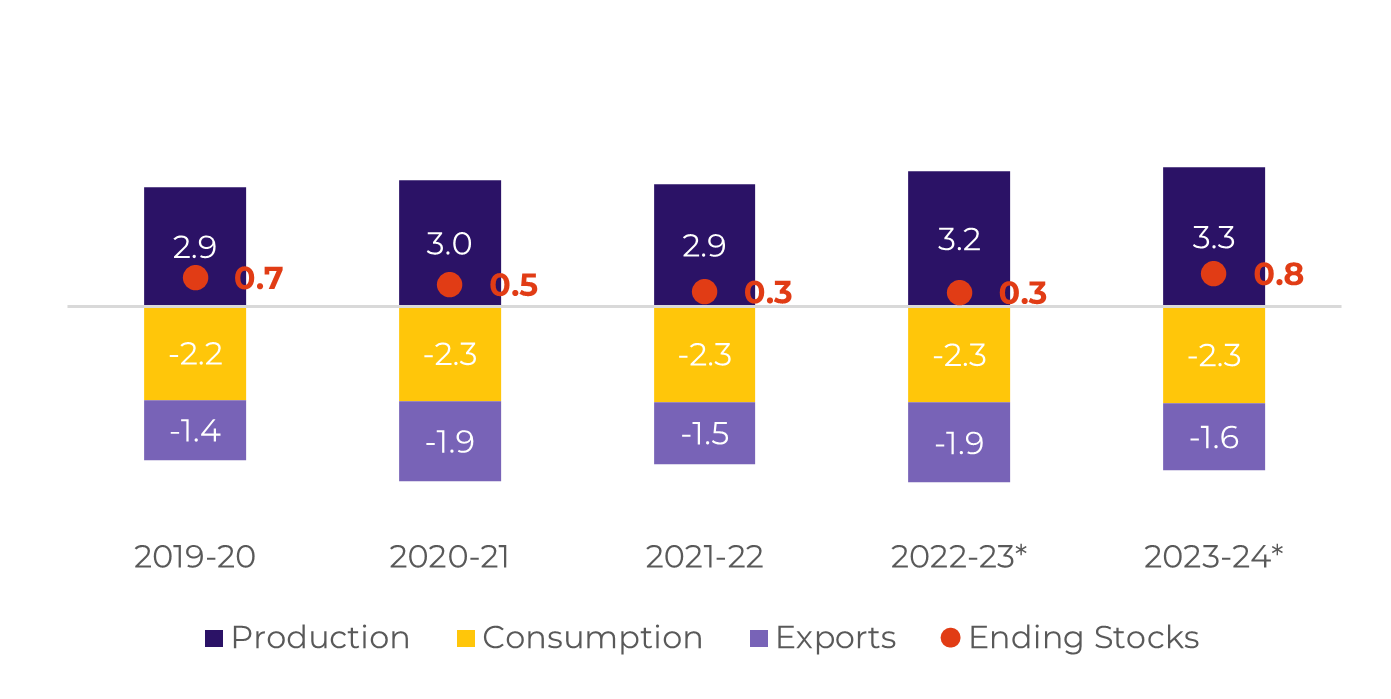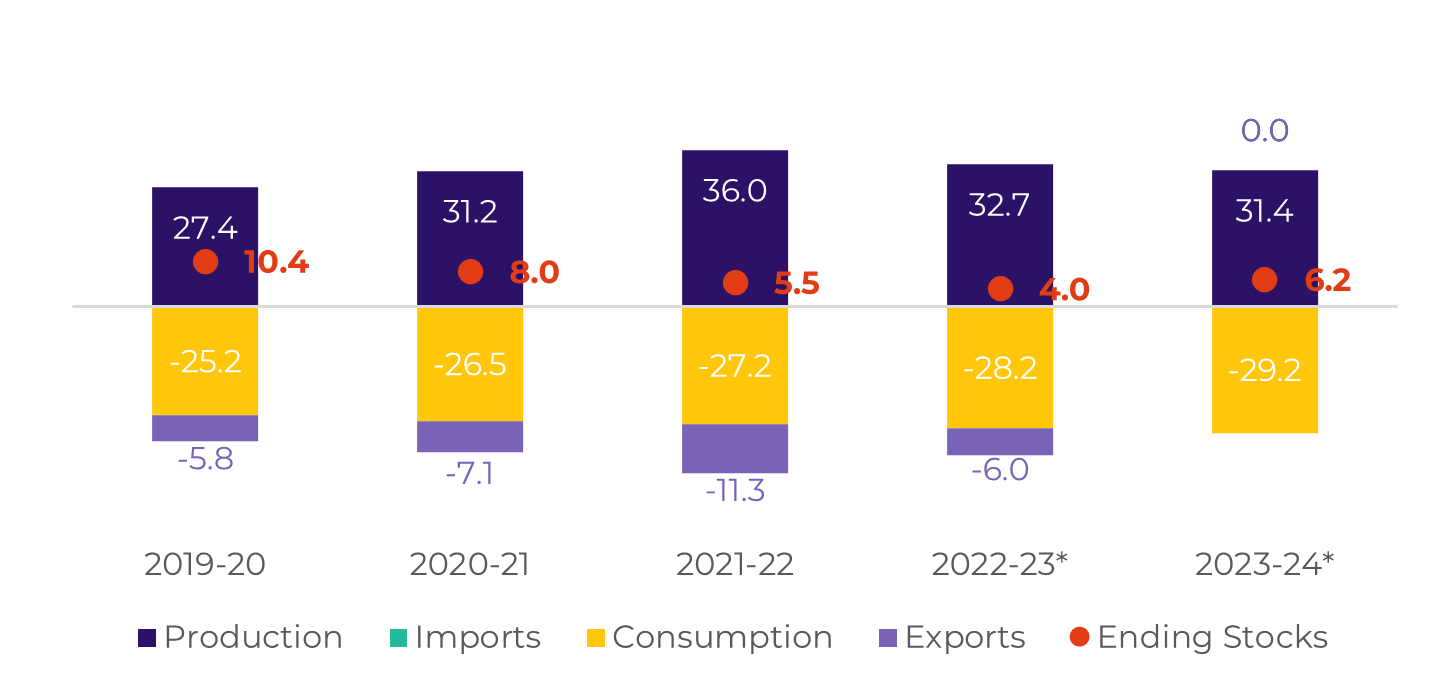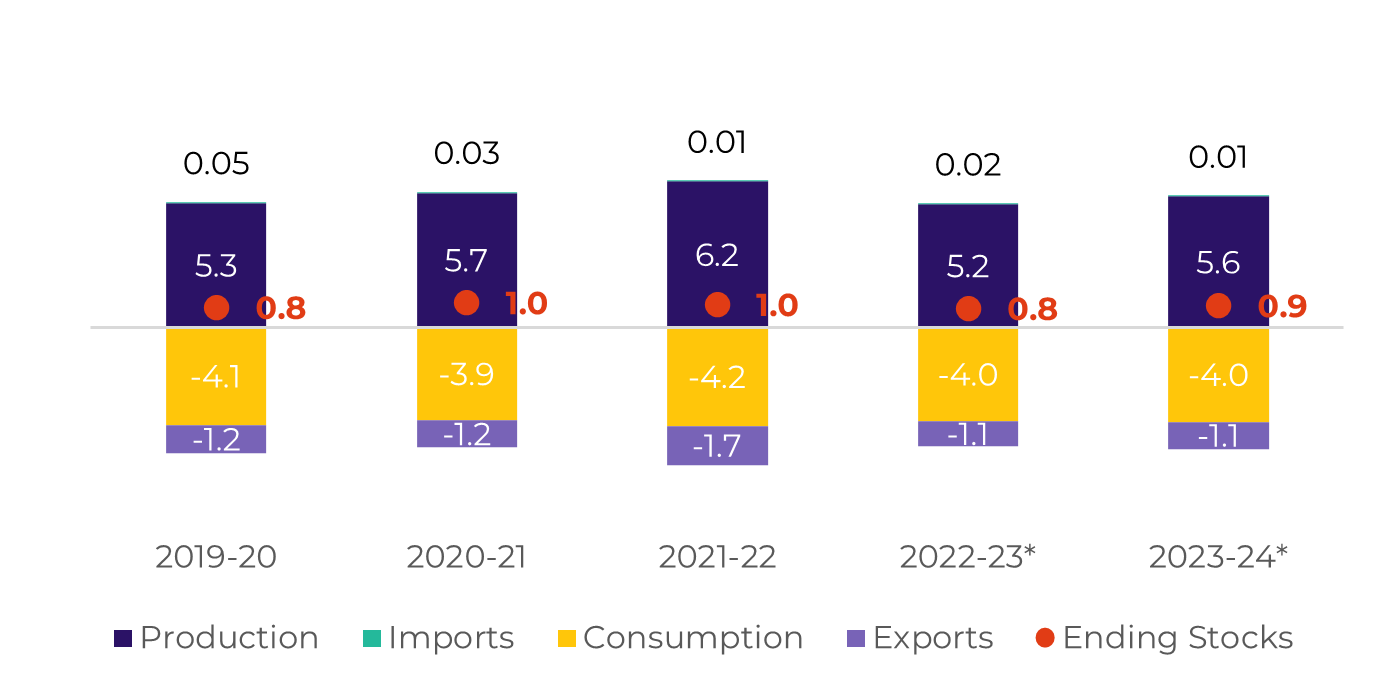
Sugar and Ethanol Monthly Report - 2023 10 06
S&D and Trade Flow
The worsening of other supplier countries' development conditions, such as the US, Mexico and other Central American countries, were partially offset by improvements in Europe, Ukraine and Brazil. Therefore, although there is still room for March to remain supportive, the extent of the bullish trend might be weaker than previously expected.
Image 1: Total Trade Flow ('000t)

Source: hEDGEpoint
Image 2: Raw's Trade Flow ('000t)

Source: hEDGEpoint
Image 3: White's Trade Flow ('000t)

Source: hEDGEpoint
Image 4: Global Supply and Demand Balance (MT RV oct-sep)

Source: hEDGEpoint
Brazil CS
Image 5: Sugar Balance - Brazil CS (Apr-Mar Mt)

Source: Unica, MAPA, SECEX, hEDGEpoint
Image 6: Total Exports - Brazil CS ('000t)

Image 7: Total Stocks - Brazil CS ('000t)
Source: SECEX, Williams, hEDGEpoint

Source: Unica,MAPA, SECEX, Williams, hEDGEpoint
Brazil CS Ethanol
Image 8: Otto Cycle - Brazil CS (M m³)

Source: ANP, Bloomberg, hEDGEpoint
Image 9: Anhydrous Ending Stocks - Brazil CS ('000 m³)

Image 10: Hydrous Ending Stocks - Brazil CS ('000 m³)
Source: Unica, MAPA, ANP, SECEX, hEDGEpoint

Source: Unica, MAPA, ANP, SECEX, hEDGEpoint
Brazil NNE
Image 11: Sugar Balance - Brazil NNE (Apr-Mar Mt)

Source: MAPA, SECEX, hEDGEpoint

Source: SECEX, hEDGEpoint
India
Image 13: Sugar Balance - India (Oct-Sep Mt)

Source: ISMA,AISTA, hEDGEpoint
Image 14: Total Domestic Exports - India ('000t w/o tolling)

Source: ISMA,AISTA, hEDGEpoint
Thailand
Image 15: Sugar Balance - Thailand (Dec-Nov Mt)

Source: Thai Sgar Millers, Sugarzone, hEDGEpoint
Image 16: Total Exports - Thailand ('000t)

Source: Thai Sgar Millers, hEDGEpoint
EU 27+UK
Image 17: Sugar Balance - EU 27+UK (Oct-Sep Mt)

Source: EC, Greenpool, hEDGEpoint
Mexico
Image 18: Sugar Balance - Mexico (Oct-Sep Mt)

Source: Conadesuca, Greenpool, hEDGEpoint
Image 19: Total Exports - Mexico ('000t)

Source: Conadesuca, Greenpool, hEDGEpoint
USA
Image 20: Sugar Balance - US (Oct-Sep Mt)

Source: USDA, hEDGEpoint
Guatemala
Image 21: Sugar Balance - Guatemala (Oct-Sep Mt)

Source: Cengicaña, Sieca, Azucar.gt,Greenpool, hEDGEpoint
Image 22: Total Exports - Guatemala ('000t)

Source: Sieca
El Salvador
Image 23: Sugar Balance - El Salvador (Oct-Sep Mt)

Source: Consaa, Sieca, Greenpool, hEDGEpoint
Russia
Image 24:

Source: Ikar, Sugar.ru, Greenpool, hEDGEpoint
China
Image 25: Sugar Balance - China (Oct-Sep Mt)

Source: GSMN, CSA, Refinitiv, Greenpool, hEDGEpoint
Obs: stocks also account for bonded warehouses volume and imports include syrup and smuggling estimates

Image 27:
Source: GSMM, hEDGEpoint

Source: CSA, Refinitiv, Greenpool, hEDGEpoint
Weekly Report — Sugar and Ethanol
livea.coda@hedgepointglobal.com
natalia.gandolphi@hedgepointglobal.com
Sugar and Ethanol Desk
murilo.mello@hedgepointglobal.com
matheus.jacques@hedgepointglobal.com
gabriel.oliveira@hedgepointglobal.com
Disclaimer
Contact us
Check our general terms and important notices.
We have updated our Terms & Conditions to reflect improvements to our platform, data handling practices, and the overall experience we provide to our clients.

